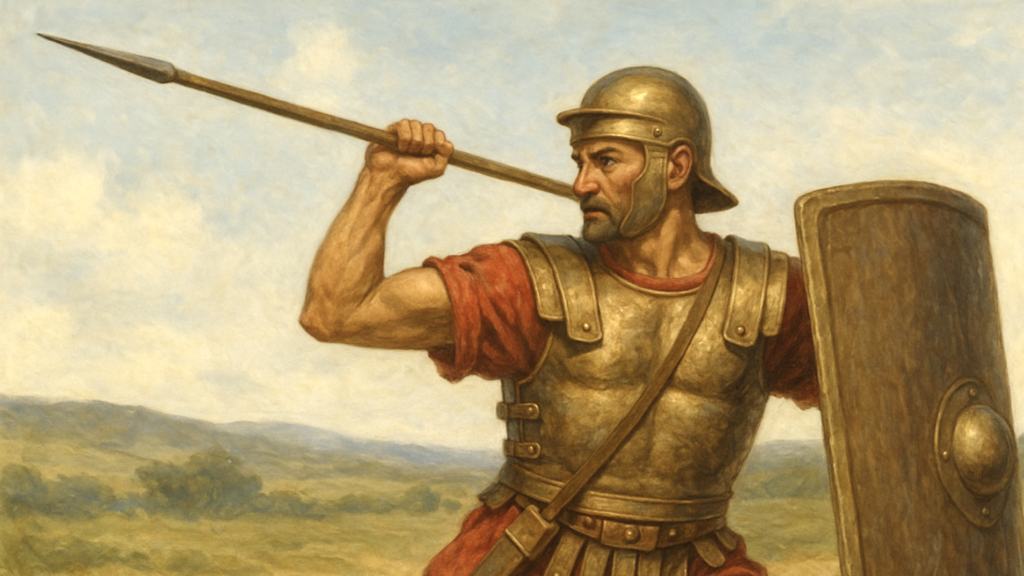As Mike Tyson once put it, with characteristic straightforwardness, “Everybody has a plan until they get punched in the mouth.” Back in the time of the Roman Republic and the early Roman Empire, all of Rome’s enemies must have had a plan until pila punched through their shields. A kind of javelin with a wooden shaft and a sharp iron shank, the pilum came in both long and short lengths. Short pila had the advantage of distance, but long pila had the advantage of power, as well as the convenient feature — whether deliberately or accidentally implemented at first — that their shanks would more readily bend after impact, making them impractical to remove from the shields they’d penetrated.
With his shield thus made unwieldy by one or more pila, an advancing combatant would thus be forced to discard it entirely — assuming he was still in the condition to do so. As you can see vividly demonstrated in the Smithsonian Channel video above, a pilum landing in the center of a shield could easily skewer anyone standing behind it.
History has it that Roman soldiers were also trained to throw their pila where enemy shields overlapped, pinning them together and thus rendering twice as much of their defense useless. After a victory, pila could be gathered from the battlefield for refurbishment, an example of quasi-industrial production undergirded by Roman military might.
Like all weaponry — indeed, like all technology — the pilum had its heyday. Polybius’ Histories credits it as an important factor in the Roman victory at the Battle of Telamon in 225 BC. But by the third century AD, it was phased out, having become an obsolete anti-infantry weapon in the face of the evolving equipment and tactics of Germanic tribes and Persian cavalry. Nevertheless, similar javelin-like tools of war evolved into other forms, outlasting the Roman Empire itself and even persisting into the early age of gunpowder. Now, when very few of us face the threat of impalement by pila or their successors, we can appreciate the skill it takes to throw them — as Philip Roth described, in his final novel, with an eloquence very different from Tyson’s — in the realm of sport.
Related Content:
Archaeologists Discover an Ancient Roman Sandal with Nails Used for Tread
Ancient Greek Armor Gets Tested in an 11-Hour Battle Simulation Inspired by the Iliad
A Close Look at Beowulf-Era Helmets & Swords, Courtesy of the British Museum
How Many U.S. Marines Could Bring Down the Roman Empire?
Based in Seoul, Colin Marshall writes and broadcasts on cities, language, and culture. His projects include the Substack newsletter Books on Cities and the book The Stateless City: a Walk through 21st-Century Los Angeles. Follow him on the social network formerly known as Twitter at @colinmarshall.








